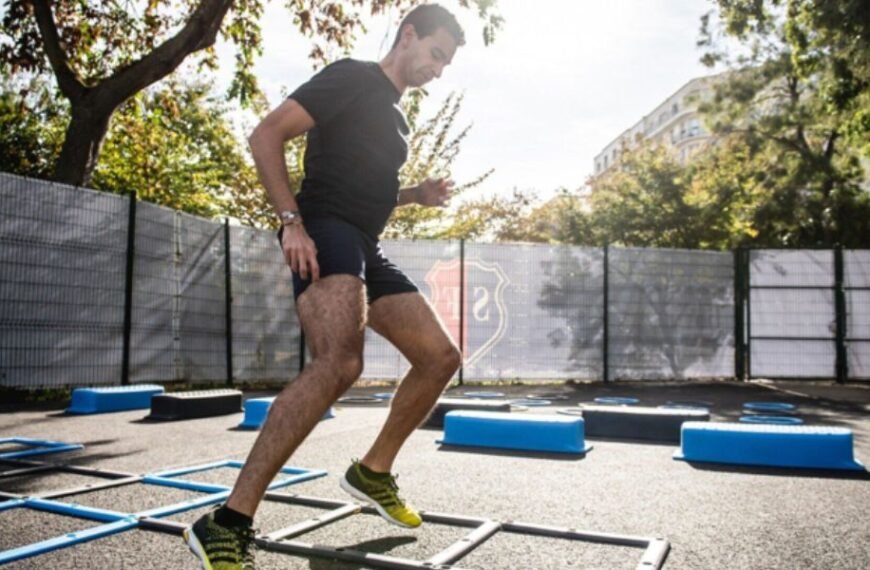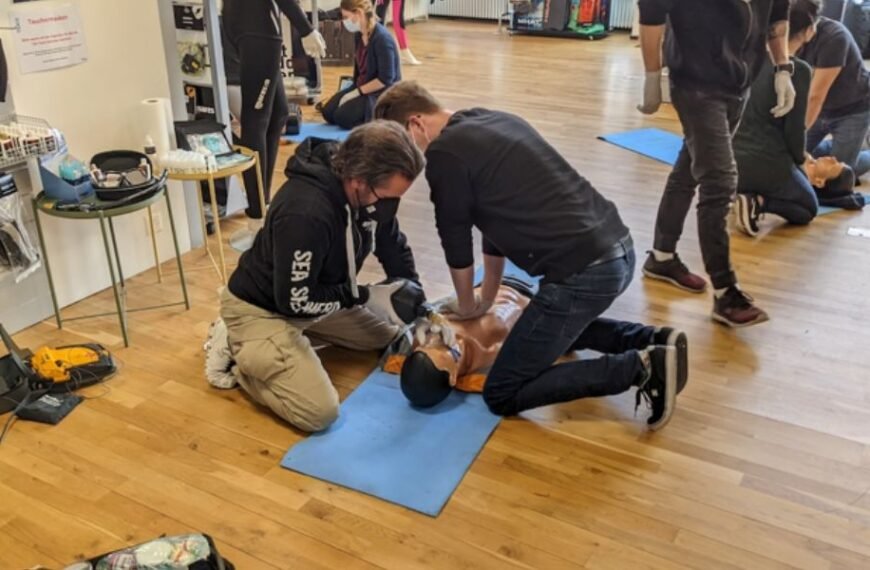A survey indicated that 35% of adults in the U.S. feel confident in their ability to perform cardiopulmonary resuscitation (CPR), an increase from 30% in previous years. However, awareness of CPR techniques remains low, with only 39% familiar with conventional CPR and 23% with hands-only CPR. Thus, the general public and workforce should put more emphasis on getting trained for life-threatening emergencies.
But did you know that there are different levels of CPR and first aid certification? Some focus on basic care for the workplace or home, while others train professionals to handle critical situations. A teacher, a lifeguard, and an EMT all need different levels of training. Each level varies in the depth of knowledge and skills required. So, scroll down to learn more about the CPR and first aid certification and which one you should choose based on your needs.
What Is CPR and First Aid?
CPR is an emergency life-saving procedure used when someone’s heart has stopped beating. Performing chest compressions and providing rescue breaths will keep oxygenated blood circulating to vital organs until professional help arrives.
First Aid is the initial assistance provided to a person who is injured or ill. It includes a variety of basic medical procedures that can stabilize someone until they receive more advanced medical treatment. First aid techniques can address injuries, burns, cuts, sprains, fractures, and medical emergencies like heart attacks and strokes.
Levels of CPR and First Aid Certification
There are generally four main levels of CPR and first aid certification: Basic CPR, Advanced CPR, Basic First Aid, and Advanced First Aid. The level you choose depends on your specific needs, whether you’re a layperson, healthcare worker, or someone involved in high-risk activities like childcare or lifeguarding. Let us explore each of them below.
Basic CPR Certification
Basic CPR certification is usually aimed at people who want to learn life-saving techniques for everyday emergencies but aren’t in a healthcare profession. This course typically covers:
● How to perform chest compressions on adults, children, and infants.
● How to provide rescue breaths for those who are not breathing.
● How to use an AED (Automated External Defibrillator).
● How to recognize the signs of a heart attack and stroke.
This course is often recommended for parents, teachers, caregivers, and others who may encounter emergencies but don’t need advanced medical training. It typically lasts around 2 to 4 hours and is suitable for both beginners and those who need to renew their certification.
Advanced CPR Certification
Advanced CPR certification is often required for professionals who need a more detailed understanding of resuscitation procedures. This includes healthcare providers, lifeguards, and emergency responders. Advanced CPR goes beyond basic chest compressions and involves:
● Two-rescuer CPR, which involves coordinating with another person to perform chest compressions and rescue breaths.
● Advanced airway management, such as using a bag-valve-mask (BVM) to help ventilate a patient.
● Managing choking in adults, children, and infants using back blows, abdominal thrusts, and other techniques.
● Manual defibrillation and proper use of an AED, including protocols for various cardiac rhythms.
This course typically requires more extensive training and hands-on practice with mannequins and equipment. Advanced CPR courses are often associated with the BLS (Basic Life Support) or ACLS (Advanced Cardiovascular Life Support) certifications, depending on the level of depth.
Basic First Aid Certification
Basic first aid certification provides essential knowledge for dealing with common injuries and medical emergencies. It’s designed for people who may be the first responders in an emergency but don’t have advanced medical training. A basic first aid course typically covers:
● How to handle bleeding, burns, and fractures.
● Techniques for recognizing and managing shock and severe allergic reactions.
● CPR and basic life-saving techniques.
● Dealing with medical emergencies, such as seizures, diabetic emergencies, and fainting.
The training is usually 3 to 6 hours long, and the certification is valid for 2 years before requiring renewal. Many people choose basic first aid courses alongside CPR courses, as both are invaluable for responding to various emergencies.
Advanced First Aid Certification
For those working in high-risk environments or who are in leadership roles, advanced first aid certification may be necessary. This level is designed for individuals who may have to provide emergency care for extended periods until professional medical help arrives. It includes everything from basic first aid but with added detail and more complex medical interventions. Topics typically covered in these certifications include:
● Managing multiple injuries in an emergency, including triage.
● Advanced wound care and splinting techniques.
● CPR with advanced airway management, such as using an oxygen mask or bag-valve-mask system.
● Pharmacological interventions, such as administering epinephrine for allergic reactions (in some advanced certifications).
This course generally lasts 8 to 16 hours, depending on the training provider. It’s ideal for people working in remote or isolated environments, such as wilderness guides, camp counselors, or those in industries like construction, where accidents are more likely.
A Breakdown of CPR and First Aid Certification Types
CPR and First Aid certification types range from basic to advanced, based on different emergency scenarios and the expertise required to complete them. Here’s a breakdown of CPR and first aid certification types:
Basic Life Support (BLS)
BLS is designed for healthcare professionals and first responders, but it’s also suitable for anyone wanting to be prepared in case of an emergency. You’ll learn essential CPR techniques, how to use an AED, and how to assist choking victims. This course is typically the foundation for other certifications.
CPR for the Professional Rescuer
This course is more advanced than basic CPR and is tailored to those working in high-risk environments. It covers adult, child, and infant CPR, AED use, and how to perform CPR on victims of different ages. Lifeguards, paramedics, and emergency responders often take this course.
Advanced Cardiovascular Life Support (ACLS)
ACLS goes deeper into the techniques used to save a life during a cardiac event. It teaches advanced airway management, medication administration, and team-based emergency response strategies. This certification is mandatory for those working in emergency medical services, hospitals, or other high-acuity care settings.
Pediatric Advanced Life Support (PALS)
PALS provides healthcare providers with the skills needed to handle pediatric emergencies, such as respiratory distress or cardiac arrest. It emphasizes early intervention, recognition, and management of life-threatening conditions in children.
Wilderness First Aid
This certification is ideal for those spending time in remote locations where emergency services may not be readily accessible. Wilderness First Aid covers how to handle injuries and illnesses in remote areas and teaches CPR and first aid in outdoor scenarios.
Stay Prepared and Take Action Today!
Parents, teachers, or healthcare workers, everyone should complete a CPR and first aid certification to stay prepared for different emergencies. These certification programs are available in different types and levels based on the needs and previous knowledge of the learner. Whatever level you pursue, the knowledge you gain from these certifications will empower you and make you a valuable contributor to saving a life.
Early intervention is often the key to survival, and with the right training, you can be that person who helps save a life. Now, what are you waiting for? Enroll in the proper CPR/ first aid course and gain life-saving skills today!









